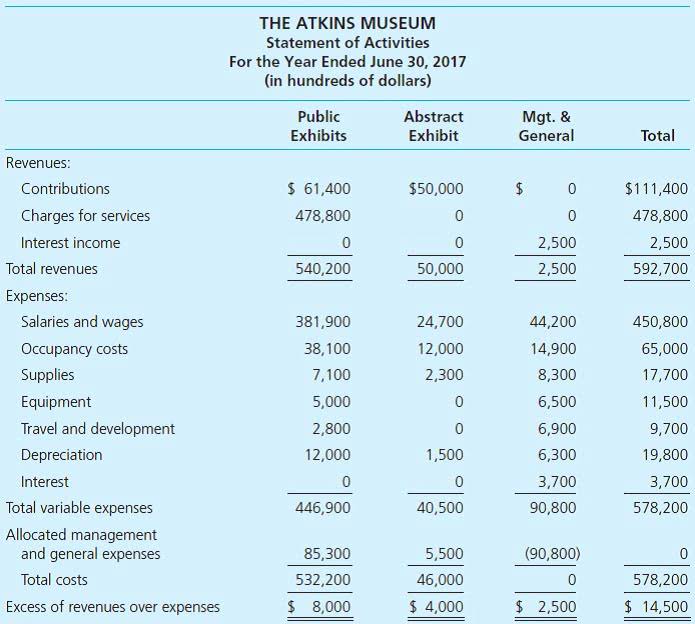
Implement a system to record all expenses and categorize them to identify areas where you could potentially cut back, if needed. Regularly review your expense reports to identify areas of high spending, and look for ways to optimize your operations. This distinction matters when analyzing business performance because it isolates operational efficiency from outside Online Accounting variables. This separation helps users of financial statements better comprehend the central operational performance of the business. Lean practices not only reduce costs but also improve overall operational efficiency and customer satisfaction. Proper tracking and management of these expenses are essential for both budgeting and tax purposes.

Software licenses and subscriptions
Deducting operating expenses lowers a company’s taxable income, reducing the amount of tax it must pay. As a result, companies have more financial means to invest in business growth. Deducting operating costs helps businesses better manage their finances while complying with tax regulations.
#2 – Operating Profit

Companies are required to carry various types of insurance, depending on their industry and location. In addition to insurance, businesses also need to allocate funds for regular maintenance and repairs. This helps ensure that their offices, equipment, and other essential assets remain in optimal condition. These expenses are essential for the functioning of a business, but they do not contribute directly to the production process, making them a key focus for cost management. Operating expenses can help you drive a profitable business, ensuring you spend only what is actually required rather than overspending business expenses.
Key operating cost ratios
- Operating expenses are prominently featured in a company’s income statement, providing a comprehensive breakdown of the costs incurred during its operations.
- Let’s say your company has net sales of $125 million, with COGS totaling $70 million, and operating expenses totaling $28 million.
- Unlike operating expenses, capital expenditures are capitalized and depreciated over time.
- Proper tracking and management of these expenses are essential for both budgeting and tax purposes.
- By omitting these additional expenses, an analysis solely focused on operating costs may overlook crucial financial information that can significantly impact a company’s overall profitability.
The third type has a base cost but increases with higher production—known as semi-variable costs. Tracking and analyzing your business’s operating costs is essential for increasing efficiency and ensuring your business is making a profit. For example, many companies sign up for subscription services and don’t use them very often or forget they exist.
Conversely, a higher OER may point to potential inefficiencies or a need for cost management improvements. Property taxes, sales taxes, and business licenses for your company are all considered operating costs. Regulatory fees, such as environmental permits for certain industries or professional licenses that require renewals, also belong here. Employee salaries and benefits make up one the largest portion of the average business’s operating expenses. All the benefits you offer — e.g., medical insurance, retirement benefits, and education/professional development programs — are also included here.
What is included in operating expenses?

Additionally, historical operating expense patterns serve as the foundation for creating realistic forward-looking budgets and financial projections. Many real-world expenses exhibit characteristics of both fixed and variable costs, creating what financial analysts call semi-variable or mixed expenses. These hybrid costs contain a baseline fixed component that exists regardless of business activity, plus a variable element that increases with usage or output. Understanding these nuanced cost behaviors allows businesses to more accurately predict how expenses will respond to changing business conditions. Many businesses focus heavily on making more money, but the smartest owners pay just as much attention to how they spend it.
- These incremental improvements frequently separate thriving businesses from struggling ones, particularly in industries with tight profit margins.
- This ratio measures the percentage of a company’s revenue that is consumed by operating expenses.
- The same, however, does not include the trade discount the company gives its customers.
- For example, the salary of an assembly line worker would be part of COGS, while the salary of an office manager would be an operating expense.
- Most companies benefit from standard groupings such as rent and facilities, payroll and benefits, marketing expenditures, office supplies, professional services, travel expenses, and technology costs.
- Calculating the operating profit margin is essential for understanding how a business manages its operating costs in relation to total revenue.
Operating Expenses: A Complete Guide for Businesses
SG&A expenses represent the overhead required to support the entire business operation. A non-operating expense is an expense incurred by a business that is unrelated to the business’s core operations. The most common types of non-operating expenses are interest charges or other costs of borrowing and losses on the disposal of assets. Accountants sometimes remove non-operating expenses to examine the performance of the business, ignoring the effects of financing and other irrelevant issues.
- With a more secure, easy-to-use platform and an average Pro experience of 12 years, there’s no beating Taxfyle.
- A large lawsuit or strategic realignment, for instance, will only skew your financials for the period in which it occurred if you don’t separate it from the costs of actually running your business.
- The IRS treats capital expenses differently than operating expenses, with the former typically requiring capitalization over multiple years instead of being expensed immediately upon incurrence.
- Fixed expenses create financial stability but also pressure, as they represent obligations a business must meet regardless of revenue.
- Non-operating expenses are any costs that aren’t directly linked to running a business.
- For business owners, understanding operating expenses is crucial for effective financial planning and management.
These activities typically include producing goods or services, marketing and sales efforts, administrative functions, research and development, and accounting and legal fees, among others. Operational activities serve as the foundation for a company’s success and provide the means to meet customer demands and grow. By successfully managing operating expenses, gym bookkeeping businesses can increase their gross profit and maintain a strong financial position.
Components of Operating Costs
Operating expenses, the regular costs of running a business day to business operating expenses day, can quietly eat away at profits if not watched carefully. From rent and employee salaries to office supplies and marketing costs, these expenses add up quickly. What separates successful businesses from struggling ones is often not how much they sell, but how well they manage what they spend. Operating expenses include a multitude of costs that businesses incur while performing their daily operational activities.